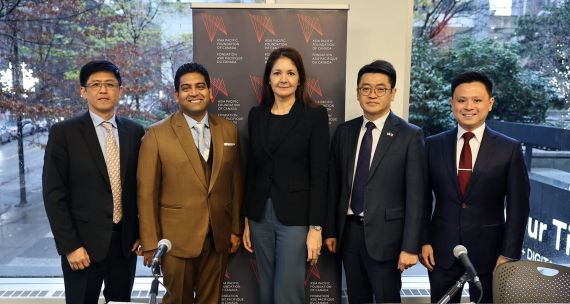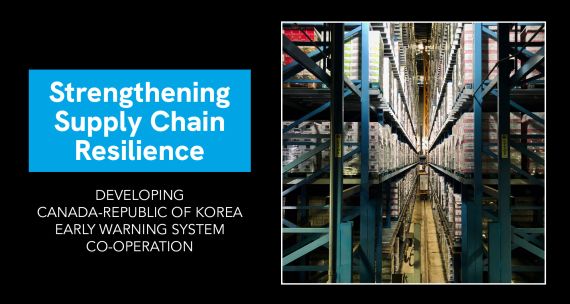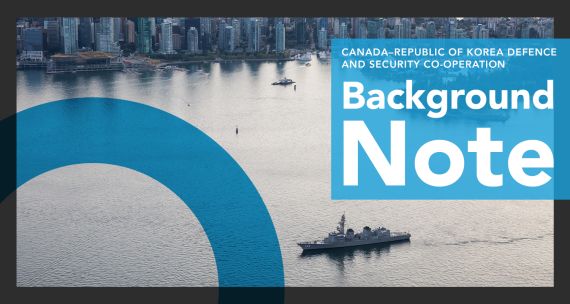Among the things that 2020 has come to be known for, the 10th anniversary of the Burnaby, B.C. and Hwaseong, South Korea sister city relationship likely does not top the list. Still, amidst pandemic-related travel restrictions and countless postponed events, Hwaseong managed to celebrate the occasion on July 20 with a gift fitting for the times: 15,000 surgical masks, presented with the help of Michael Chang, Ambassador of Seoul’s City Council, and Byung-Won Chung, Consul General of the Republic of Korea in Vancouver. “Despite the distance, sister cities work together in challenging times,” said Burnaby Mayor Mike Hurley, in a statement on social media.
COVID-19 has dealt a blow to sister and friendship city relationships worldwide. Compared to diplomatic relations between central governments, non-central government (NCG) ties across national boundaries, which focus much more on people-to-people diplomacy and local concerns, rely more heavily on delegation visits to achieve their goals. Such visits are unlikely to materialize given the pandemic. At the same time, faced with a public health crisis and an economic downturn, local governments are justifiably decreasing the priority of twinning-related programs and activities.
South Korea, however, is an exception. In addition to donating masks to sister cities through government representatives already posted abroad, South Korean cities are actively thinking about post-COVID-19 engagement with their international partners. Gunpo, a city in Gyeonggi province whose five international sister cities include Belleville, Ontario, has recently launched an ‘ideas competition’ to look for ways to expand on its existing twinning repertoires. Close by, the city of Incheon is also looking to aid its post-COVID recovery by seeking new sister and friendship cities based on shared economic concerns. Montreal is reported to be among the candidates with which Incheon is interested in partnering.
The proactiveness of South Korean cities in maintaining and expanding their twinning programs did not start during COVID-19, but rather is a continuation of longstanding beliefs and practices. By better understanding what these agreements entail, stakeholders in Canada can better understand how their Korean counterparts operate. Perhaps more importantly, the South Korean model, which carries a clearly defined and demonstrated strategy focused on international “competency” and “capacity,” may motivate Canadian provinces and municipalities to further think about their own twinning strategies.
Twinning in South Korea
South Korea is serious about twinning relationships. As of December 2019, the country of 52 million has 1,725 twinning relationships with NCGs (districts, municipalities, provinces, etc.) in 82 countries. This includes 716 sister city relationships and 1,009 friendship city relationships. Sister city agreements are council-approved, formalized, co-operative relationships, while friendship city agreements are seen as precursors to sister city agreements and do not need city council approval.
As the time-series graph below shows, South Korea’s twinning program, primarily driven by a high number of new friendship agreements each year, continues to grow at an impressive rate. In comparison, Canada has 339 twinning relationships with NCGs in 34 countries, and its twinning growth has slowed in recent years, particularly on the China front.
The U.S. and Japan featured prominently in early South Korean twinning, but since the 1990s, China has become the number one option. South Korea now has more twinning agreements with China than with Japan and the U.S. (second and third place) combined. Recent years have seen South Korea shift toward emerging markets such as Vietnam and the Philippines. However, new twinning agreements with China continue to lead the way, despite diplomatic disagreements over issues such as the 2016 deployment of THAAD, a U.S. anti-missile system, in South Korea.
Canada-South Korea twinning
With 21 sister and friendship relationships between Canada and South Korea, the twinning program between the two countries is small. South Korea is Canada’s fourth-largest twinning partner, while Canada is South Korea’s twelfth largest. But the agreements are robust: a majority of the relationships have been active in at least one of the last five years. Ontario has the highest number of Korea twinning agreements, with nine; Alberta and British Columbia each has four; and, Quebec and New Brunswick each has two.
Within Canada, provinces vary in how actively governments within their jurisdiction engage with twinning partners in South Korea, with British Columbia being the most active, followed by Ontario, Quebec, and Alberta, and New Brunswick coming in last. On average, over the past five years, local governments in B.C. engaged with their twinning partners in South Korea every other year, while New Brunswick’s two twinning relationships with South Korea saw no activity and appear dormant.
Data on the number of agreements and the level of activeness is helpful, but to appreciate how active some relationships are, it’s the nature of these engagements that provides the most insight. According to data collected by the Governors Association of Korea (GAOK), Canada-South Korea twinning sees significant contribution stemming from “administrative exchange,” or visits by political officials.
Then comes “youth exchange.” Though in Canada-South Korea twinning, it’s not much of an exchange, since all youth-related activities in the last five years have originated from South Korea, with Canadian youth missing out on the opportunity to experience another culture and language. The same is true for “people exchanges,” which denotes longer-term training or professional development programs – often lasting for months – for civil servants in the partnership city or province. All four trips under the category have gone from South Korea to Canada, enabling the Korean side to learn more about Canada’s administrative and technical practices.
Lessons for Canada
Canada does not have a consistent twinning strategy. Clearly-defined strategies are rare, and activities and reviews, to the extent they occur, usually operate on an ad hoc basis. Previous research by the Asia Pacific Foundation of Canada on Chinese and Japanese twinning shows that provincial and local governments in Canada have tended to follow the lead of their foreign twinning partners in organizing twinning activities. Canada-China twinning features more official and business visits, while Canada-Japan twinning sees a higher ratio of student and cultural exchanges.
The same dynamics are again present in Canada-South Korea twinning, with the Korean side being much more active in initiating engagements it sees as beneficial, such as youth, culture, and people exchanges, while the Canadian side follows a more ad hoc pattern, mostly reciprocating official delegation visits.
A good twinning strategy is rooted in ready access to records of past and current twinning relationships. Record-keeping enables regular reviews and opens doors for improvements over time. South Korea keeps an annually-updated twinning database through the GAOK based on self-reporting from provinces and local governments. This public database tracks not only individual agreements but also all past engagement activities between the two sides in each year. In Canada, stakeholders and the general public are often left in the dark, as no government or organization tracks past twinning activities.
The lack of transparency fuels public mistrust and keeps officials from learning from past successes and mistakes. Canadian officials working on twinning should establish a mechanism to report and track twinning-related events, whether through a government office or working with an arms-length organization with demonstrated expertise on the topic – such as APF Canada.
Beyond record-keeping, a good twinning strategy requires consistency, especially regarding long-term goals. In South Korea, city twinning involves stakeholders beyond city councils and mayors. Municipal governments typically retain an ‘internationalization’ office tasked with managing the city’s overseas relations. Beyond the municipal level, provincial governments track city twinning relationships within their jurisdictions, and the national government, through its embassies and consulates abroad, actively facilitates the signing of new agreements between provinces and cities in South Korea and foreign partners. Multilevel twinning involvement means that the expertise and agency of twinning are shared among multiple stakeholders, which in turn leads to institutionalization.
In contrast, twinning in Canada is often strongly associated with individual initiatives, whether it is a mayor, a premier, a city councillor, or a business person, making abrupt changes more likely when there is a change in personnel. But it doesn’t have to remain this way. Short of establishing new offices dedicated to international affairs, Canadian governments can strengthen the momentum for twinning by merely increasing the level of involvement for existing offices and relationships. Provinces, for example, can involve their overseas representative offices in twinning, and some, like Alberta, have already done so. They can also work with cities within their jurisdictions to develop longer-term plans and hold each other accountable for their fulfillment.
Lastly, at the core of a strategy is a set of preferences. For South Korea, twinning is about internationalization. On this point it shares a common perspective with. In its twinning relationship with Canada, as demonstrated from the content and direction of engagement, the value South Korean provinces and local governments place on international experiences for its students and professionals – experiences that they are expected to share upon returning home – seems to far outweigh the value of economic gain.
On the other hand, officials tasked with twinning on the Canadian side seem uninterested in twinning outside of the occasional delegation visit to South Korea. This needs to change. What do Canadian NCGs want out of their relationships with South Korean counterparts – is it cultural competency, policy development, economic growth, research and technological exchange, or something else? Conducting twinning with a clear purpose, rather than twinning for the sake of twinning, can lead to better selections of twinning partners and better outcomes of existing twinning agreements.
Given the current COVID-19 crisis and South Korea’s successful response, for example, Canadian NCGs could assign higher priority to policy exchange alongside economic development, and structure near-term twinning activities around best practices in public health and economic revitalization.
Provinces and local governments in South Korea did not let the COVID-19 pandemic stop them from finding ways to improve their twinning relationships with NCGs in other countries. Instead, they have used the hiatus to explore new ways of twinning and find new partners. The same opportunity is there for governments in Canada. But before that, perhaps a deeper rethinking of our twinning strategy is in order.





